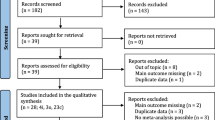Abstract
Some major drawbacks of a bicarbonate-buffered culture medium include the requirement of an elaborate incubator system able to maintain a 5% CO2 environment and the inability of the culture medium to maintain a physiological pH range (pH 7.3–7.4) in room air (0.03% CO2). This work resulted in the development of IVF culture media, BB (modified T6) and Hams-HEPES, which use HEPES-buffered systems not requiring the specialized CO2 environment to maintain a physiological pH range in room air. These media generate above-average cleavage rates in in vitro fertilized, superovulated B6CBAF1 mice ova. The effect of heparin and HEPES on cleavage was studied and neither had a significant effect at the concentrations used. Cleavage rates of nonfertilized ova (parthenogenic division) were 9 to 13%. There was no significant difference in parthenogenesis between any of the culture media and it appears to be a function of the strain of mice and the timing between human chorionic gonadotropin (hCG) injection and ovum collection. These results emphasize the need to account for parthenogenesis when determining cleavage rates of in vitro fertilized mouse ova. Also, the results suggest that because of individual mouse differences in cleavage rates, it is important to use an adequate number of mice per group to determine an accurate, average cleavage rate.
Similar content being viewed by others
References
Ackerman S, Swanson R: In vitro fertilization and preimplantation of embryo development in mice. Infertility 1983;6:293–298
Bowman CM, Berger EM, Butler EN, Toth KM, Repine JE: HEPES may stimulate culture endothelial cells to make growth-retarding oxygen metabolites. In Vitro Cell Dev Biol 1985;21:140–142
Edirisinghe WR, Law HY, Ng SC, Chia CM, Ratnam, SS: Superovulation of mice with human menopausal gonadotropin or pure follicle-stimulating hormone in combination with human chorionic gonadotropin and the effects of oocyte aging on in vitro fertilization. J Vitro Fert Embryo Transfer 1986;3:314–318
Edwards RG, Fishel SB, Cohen J, et al.: Factors influencing the success of in vitro for alleviating human infertility. In Vitro Fertil 1984;1:3
Gates AH: Maximizing yield and developmental uniformity of eggs.In Methods of Mammalian Embryology, JC Danel Jr (ed). San Francisco, Freeman, 1971, pp 64–75
Kaufman MH:In Early Mammalian Development: Parthenogenic Studies, Cambridge University Press, 1983, pp 1–28
Lee MA, Storey BT: Bicarbonate is essential for fertilization of mouse eggs: Mouse sperm require it to undergo the acrosome reaction. Biol Reprod 1986;34:349–356
Mahadevan MM, Fleetham J, Church RB, Taylor FJ: Growth of mouse embryos in bicarbonate media buffered by carbon dioxide, Hepes or phosphate. J Vitro Fert Embryo Transfer 1986;3:304–307
Mahadevan MM: Personal communication, 1987
Quinn P: Personal communication
Sher G, Knutzen V, Stratton CJ, Montakhab MM, Allenson SG, Mayville J, Rubenstein JA, Glass MJ, Bilach SM: The development of a non-university based ambulatory in vitro fertilization/embryo transfer program: Phase 1. Fertil Steril 1984;41:4:511–518
Sullivan PC, Ferris AL, Storrie B: Effects of temperature, pH elevators, and energy production inhibitors on horseradish peroxidase transport through endocytotic vessicles. J Cell Physiol 1987;131:58–63
Trounson A, Peura A, Kirby C: Ultrarapid freezing: a new low-cost and effective method of embryo cryopreservation. Fertil Steril 1987;48:5:843–850
Whittingham DG: Fertilization of mouse eggs in vitro. Nature 1968;220:592–593
Zigler JS Jr, Lepe-Zuniga JL, Vistica B, Gery I: Analysis of the cytotoxic effects of light-exposed HEPES-containing culture medium. In Vitro Cell Dev Biol 1985;21:282–287
Author information
Authors and Affiliations
Rights and permissions
About this article
Cite this article
Behr, B.R., Stratton, C.J., Foote, W.D. et al. In vitro fertilization (IVF) of mouse ova in HEPES-buffered culture media. J Assist Reprod Genet 7, 9–15 (1990). https://doi.org/10.1007/BF01133877
Received:
Accepted:
Issue Date:
DOI: https://doi.org/10.1007/BF01133877




